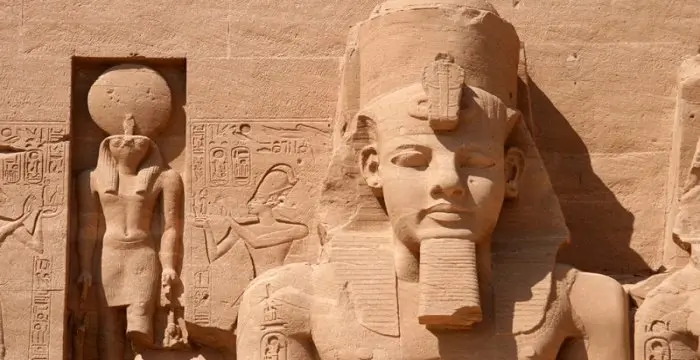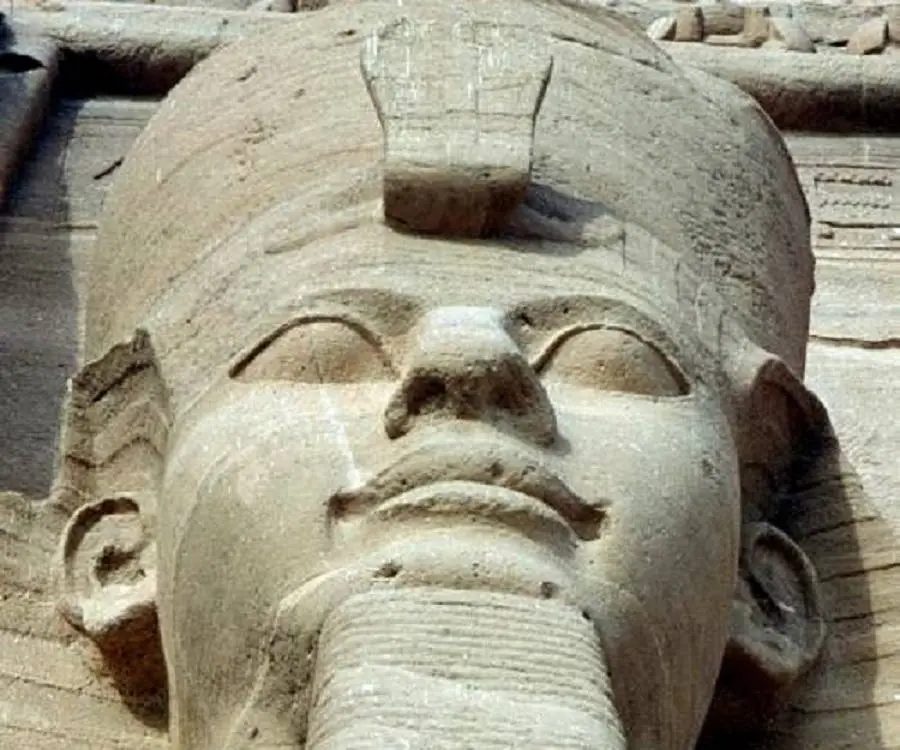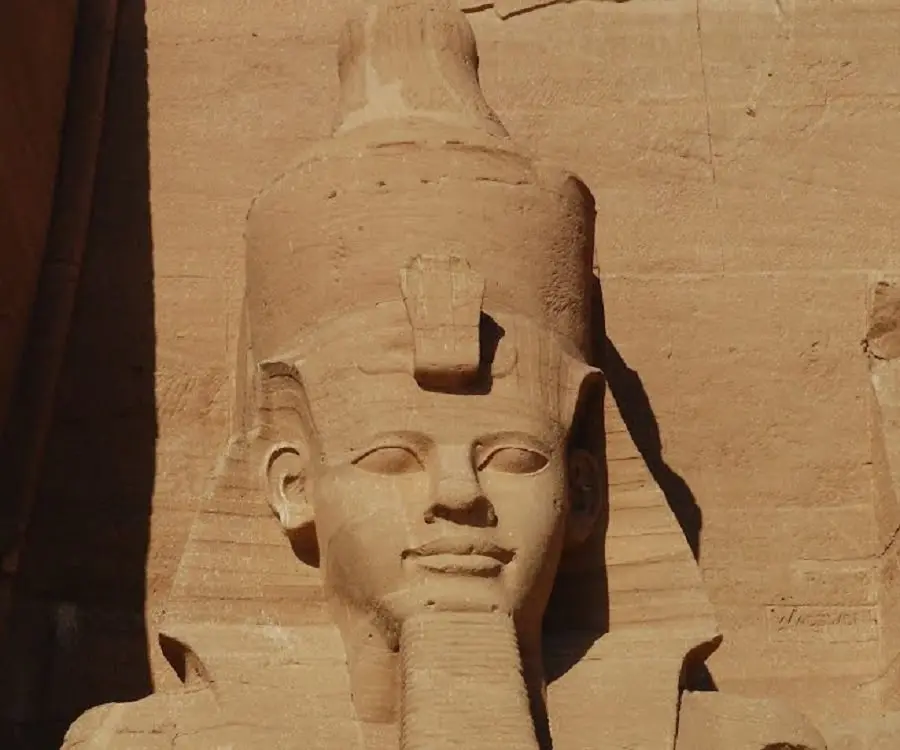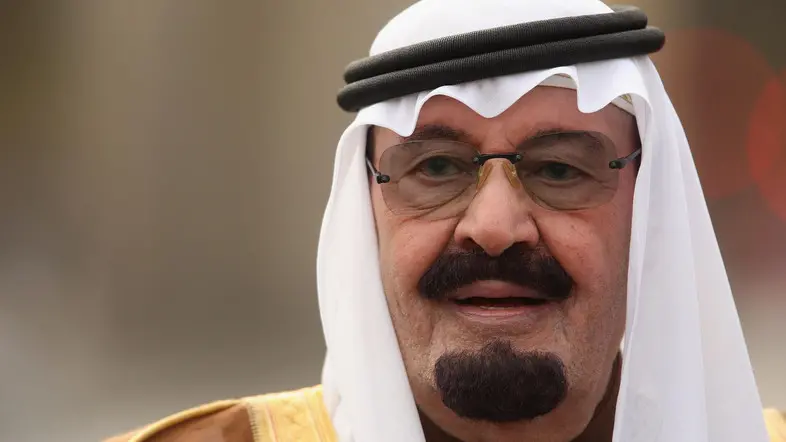
Ramesses II - Kings, Family and Childhood
Ramesses II's Personal Details
Ramesses the Great was the third pharaoh of the Nineteenth Dynasty of Egypt
| Information | Detail |
|---|---|
| Birthday | 1303 BC |
| Nationality | Egyptian |
| Famous | Historical Personalities, Emperors & Kings, Emperors, Greatest Pharaoh of the Egyptian Empire, Kings |
| Spouses | Bintanath, Henutmire, Isetnofret, Maathorneferure, Nebettawy, Nefertari, حاتّي |
| Siblings | Henutmire, Tia |
| Known as | Ramses II, Ramesses the Great |
| Childrens | Amun-her-khepeshef, Bintanath, Henuttawy, Khaemweset, Meritamen, Merneptah, Meryatum, Nebettawy, Pareherwenemef, Ramesses |
| Gender | Male |
| Father | Seti I |
| Mother | Tuya |
| Famous as | Greatest Pharaoh of the Egyptian Empire |
| Died at Age | 90 |
// Famous Kings
Sundiata Keita
Sundiata Keita was the founder of the Mali Empire in West Africa. This biography profiles his childhood, early life, struggles, founding of empire, rule, administration, achievements and also gives some fun facts.
Ashoka
Ashoka was the third emperor of the Mauryan Dynasty and ruled almost the entire Indian subcontinent. This biography profiles his childhood, life, reign, achievements and timeline
Murad IV
Murad IV was one of the mighty Sultans in the history of the Ottoman Empire. This biography profiles his childhood, family, accession, rule, administration and timeline.
Ramesses II's photo
Who is Ramesses II?
Ramesses the Great was the third pharaoh of the Nineteenth Dynasty of Egypt. Also known as Ramesses II, he was one of Egypt's most celebrated warriors and is considered to be the greatest and most powerful pharaoh of the Egyptian Empire. Much renowned for his wars with the Hittites and Libyans, he was also famous for leading several military expeditions into the Levant, reasserting Egyptian control over Canaan. Born into a family of non-royal origins, Ramesses was the son of Seti, who went on to become pharaoh of the New Kingdom Nineteenth Dynasty of Egypt. Appointed as Prince Regent by his father at the age of 14, Ramesses is believed to have taken the throne in 1279 BC and had the second longest reign in Egyptian history. He spent the early years of his reign engaged in extensive building programs and built several cities, temples and monuments. Over a period of time he also gained a reputation as a great warrior and led several expeditions to conquer territories that his father had been unable to conquer. Another one of his famous exploits was the victory over Sherden sea pirates who were wreaking havoc along Egypt's Mediterranean coast. The most famous of his military campaigns is the Battle of Kadesh which was probably the largest chariot battle ever fought, involving around 5,000–6,000 chariots
// Famous Emperors
Sundiata Keita
Sundiata Keita was the founder of the Mali Empire in West Africa. This biography profiles his childhood, early life, struggles, founding of empire, rule, administration, achievements and also gives some fun facts.
Ashoka
Ashoka was the third emperor of the Mauryan Dynasty and ruled almost the entire Indian subcontinent. This biography profiles his childhood, life, reign, achievements and timeline
Murad IV
Murad IV was one of the mighty Sultans in the history of the Ottoman Empire. This biography profiles his childhood, family, accession, rule, administration and timeline.
Childhood & Early Life
Ramesses II was born in c. 1303 BC to Seti I and Queen Tuya in ancient Egypt. Seti I, a pharaoh of the New Kingdom Nineteenth Dynasty of Egypt, was considered to be a brave warrior and a great king.
Ramesses was groomed for succeeding his father from a young age. He was ranked as a captain of the army when he was just ten years old. Though it is obvious that his rank would have been honorific given his tender age, it is believed that he had started receiving military training by then.
When Ramesses was 14, his father made him the Prince Regent. The young prince started accompanying his father on his military campaigns and had gained some experience of kingship and war by the time he reached his late teens.
Accession & Reign
Seti I died in 1279 BC and Ramesses ascended to the throne. During the initial years of his reign he immersed himself in extensive building projects. He supervised the building of a large number of cities, temples and monuments. He also established the city of Pi-Ramesses in the Nile Delta as his new capital.
The young pharaoh matured into a brave warrior and led numerous campaigns to conquer those territories which his father had been unable to do so and secure Egypt’s borders.
In 1274 BC, the Battle of Kadesh broke out between the forces of the Egyptian Empire under Ramesses II and the Hittite Empire under Muwatalli II at the city of Kadesh on the Orontes River. It was a chariot battle fought with thousands of chariots. Ramesses' army crossed the Egyptian border and reached the area of Kadesh from the South.
The pharaoh personally led several charges into the Hittite ranks together with his personal guard and using the superior maneuverability of their chariots, attacked the Hittite chariotry. The heavier Hittite chariots were easily overtaken and dispatched by the lighter, faster, Egyptian chariots.
However, as the battle progressed, both the Egyptians and the Hittites suffered heavy casualties. The Egyptian army failed to break Kadesh's defenses while the Hittite army failed to defeat the Egyptians and gain a complete victory.
The following years were marked with intermittent wars and hostility though neither army was able to register a definite victory. Finally Ramesses concluded a treaty of peace with the Hittites in 1258 BC, becoming the first king in history to sign a peace treaty with his enemies.
Years of hostility between the warring armies ended and the two nations established friendly ties. The Egyptians and the Hittites regularly exchanged diplomatic letters and Ramesses contracted a marriage with the eldest daughter of the Hittite king in 1245 BC. It is also suggested that he married another Hittite princess at a later date.
Peace mostly prevailed during the later years of Ramesses’ reign. There are some accounts which describe Ramesses’ undertaking large military actions against the Libyans, though no detailed accounts of such expeditions exist.
Over the course of his long reign which spanned around 66 years, Ramesses fought great battles, brought peace, built great monuments across the empire, and maintained Egyptian borders. Egypt became a very prosperous nation during his reign and in the 30th year of his rule, Ramesses was ritually transformed into a god during the Sed festival.
Major Battles
The Battle of the Kadesh which was fought between the forces of the Egyptian Empire under Ramesses II and the Hittite Empire under Muwatalli II was the battle Ramesses was most famous for. The battle, which is believed to be the largest chariot battle ever fought, involved around 5000-6000 chariots. The battle continued for years with neither of the armies achieving a definite victory and was finally concluded with a treaty of peace between the two armies.
Personal Life & Legacy
Ramesses had several wives and concubines. His first and most favorite queen was Nefertari, who probably died comparatively early in the reign. She was very beautiful as well as intelligent. Highly educated, she was able to both read and write hieroglyphs, a very rare skill at the time.
Some of his other queens were Isetnofret, Maathorneferure, Meritamen, Bintanath, Nebettawy, and Henutmire. In addition to his wives he had a large harem of concubines. Ramesses is believed to have fathered over a 100 children through his numerous wives and concubines.
He lived a long life and reigned over his country for 66 years. He suffered from several health problems during his last years and died at the age of around 90 in 1213 BC. He was mummified upon his death and his mummy is now preserved in the Egyptian Museum at Cairo. Ramesses was succeeded by his son Merneptah.
Ramesses II biography timelines
- // 1303 BCRamesses II was born in c. 1303 BC to Seti I and Queen Tuya in ancient Egypt. Seti I, a pharaoh of the New Kingdom Nineteenth Dynasty of Egypt, was considered to be a brave warrior and a great king.
- // 1279 BCSeti I died in 1279 BC and Ramesses ascended to the throne. During the initial years of his reign he immersed himself in extensive building projects. He supervised the building of a large number of cities, temples and monuments. He also established the city of Pi-Ramesses in the Nile Delta as his new capital.
- // 1274 BCIn 1274 BC, the Battle of Kadesh broke out between the forces of the Egyptian Empire under Ramesses II and the Hittite Empire under Muwatalli II at the city of Kadesh on the Orontes River. It was a chariot battle fought with thousands of chariots. Ramesses' army crossed the Egyptian border and reached the area of Kadesh from the South.
- // 1258 BCThe following years were marked with intermittent wars and hostility though neither army was able to register a definite victory. Finally Ramesses concluded a treaty of peace with the Hittites in 1258 BC, becoming the first king in history to sign a peace treaty with his enemies.
- // 1245 BCYears of hostility between the warring armies ended and the two nations established friendly ties. The Egyptians and the Hittites regularly exchanged diplomatic letters and Ramesses contracted a marriage with the eldest daughter of the Hittite king in 1245 BC. It is also suggested that he married another Hittite princess at a later date.
- // 1213 BCHe lived a long life and reigned over his country for 66 years. He suffered from several health problems during his last years and died at the age of around 90 in 1213 BC. He was mummified upon his death and his mummy is now preserved in the Egyptian Museum at Cairo. Ramesses was succeeded by his son Merneptah.
// Famous Emperors & Kings
Sundiata Keita
Sundiata Keita was the founder of the Mali Empire in West Africa. This biography profiles his childhood, early life, struggles, founding of empire, rule, administration, achievements and also gives some fun facts.
Ashoka
Ashoka was the third emperor of the Mauryan Dynasty and ruled almost the entire Indian subcontinent. This biography profiles his childhood, life, reign, achievements and timeline
Murad IV
Murad IV was one of the mighty Sultans in the history of the Ottoman Empire. This biography profiles his childhood, family, accession, rule, administration and timeline.
Xerxes I
Xerxes I (Xerxes the Great) was the fourth and the most famous king of the Archaemenid dynasty of Persia. This biography profiles his childhood, family, personal life, life history, achievements, campaigns, administration, death and other facts.
Sargon of Akkad
Sargon of Akkad, also called ‘Sargon the Great’, ‘Sarru-Kan’ and ‘Shar-Gani-Sharri’, was the founder and first king of the Akkadian Empire. This biography profiles his childhood, life, rule, administration, timeline, and gives some fun facts.
Abdullah of Saudi Arabia
Abdullah bin Abdulaziz Al Saud was the King of Saudi Arabia from 2005 to 2015 and the third wealthiest head of state in the world. Find more facts about his life, childhood and timeline.
Ramesses II's FAQ
When was Ramesses II died?
Ramesses II was died at 2020-04-14
Which age was Ramesses II died?
Ramesses II was died at age 90
What is Ramesses II nationalities?
Ramesses II's nationalities is Egyptian
Who is Ramesses II spouses?
Ramesses II's spouses is Bintanath, Henutmire, Isetnofret, Maathorneferure, Nebettawy, Nefertari, حاتّي
Who is Ramesses II siblings?
Ramesses II's siblings is Henutmire, Tia
Who is Ramesses II childrens?
Ramesses II's childrens is Amun-her-khepeshef, Bintanath, Henuttawy, Khaemweset, Meritamen, Merneptah, Meryatum, Nebettawy, Pareherwenemef, Ramesses
Who is Ramesses II's father?
Ramesses II's father is Seti I
Who is Ramesses II's mother?
Ramesses II's mother is Tuya
How famous is Ramesses II?
Ramesses II is famouse as Greatest Pharaoh of the Egyptian Empire







